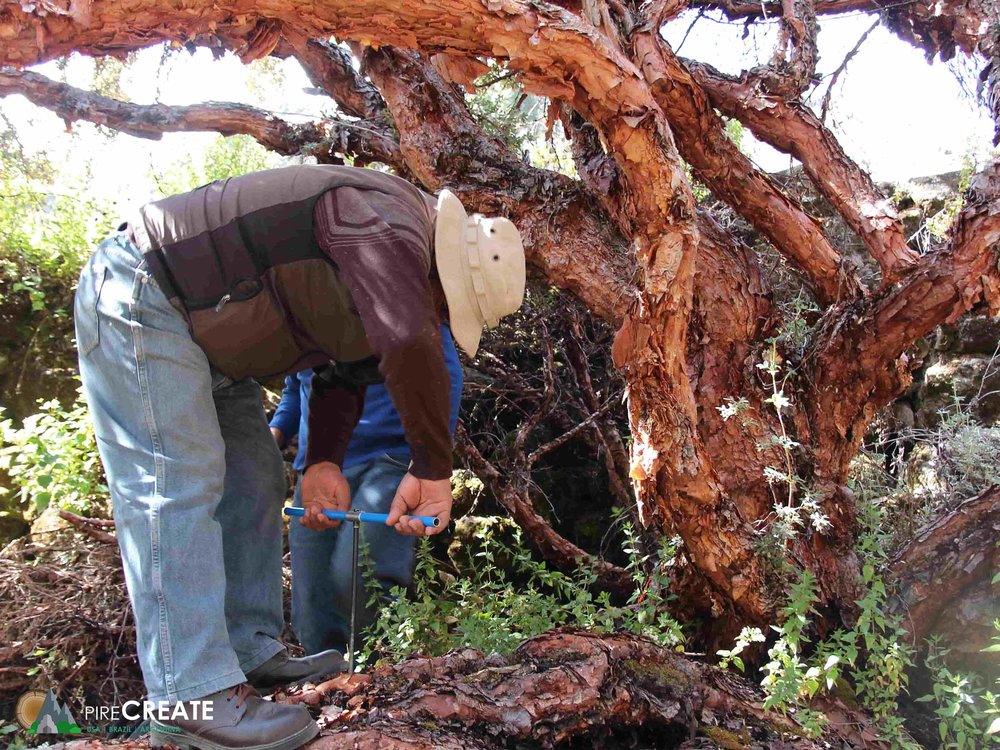ALBANY, N.Y. (Jan. 12, 2021) – A new tool developed through the University at Albany Visualization and Informatics Lab (AVAIL) is offering an interactive way to view up to two millennium’s worth of paleoclimate data around the globe.
The tool, a result of UAlbany’s ongoing $5 million Partnerships for International Research and Education (PIRE) project funded through the National Science Foundation, includes three visualization maps, all of which are available now to the public:
- Tree Ringer Viewer: Provides visual access to the National Oceanic and Atmospheric Administration (NOAA)’s international tree-ring data bank, the world’s largest public archive of historical tree ring data. More than 4,000 sites on six continents are included. Not only do these rings tell the age of a tree, but also the climatic conditions during its lifetime.
- Forest Stress Viewer: PIRE researchers have turned to more than a century’s worth of data (from 1901 to 2012) from NOAA’s international tree-ring data bank to analyze historical tree growth. Through the forest stress viewer, users can analyze both past and future projections (from 2045 to 2060) of forest stress around the world.
- PHYDA Climate Globe: Visually maps 2,000 years of reconstructed temperature and hydroclimate trends onto a global interface, in turn taking an expansive database and translating it into a web-based visualization platform for streamlined presentation, customized data download options and interactive collaboration.
Reconstructing Climate Change
In 2017, Mathias Vuille, a professor in UAlbany’s Department of Atmospheric and Environmental Sciences (DAES), teamed up with six institutions and 18 investigators from the United States, Brazil and Argentina to gain valuable insight on how and why Earth’s climate has varied naturally over the past thousand years.
Through the PIRE project, Vuille and his team, which also includes DAES postdoctoral research associate Ernesto Tejedor, merged data from the two largest tree-ring and cave sediment archives in the Southern Hemisphere, allowing them to produce reconstructions of historical extreme weather events (monsoons, El Niño, etc.), analyze societal responses and make future climate projections based on past model-archive comparisons.
The team has collaborated with AVAIL over the last year to translate the research into easy-to-use visualization tools that can help to better inform climate change policies, research and decision-making at a global scale.
“Just having numbers and large datasets is not going to convince most people of the real societal dangers of global climate change,” said Vuille. “We’re grateful to AVAIL for translating our work into a non-scientific language, letting people see it with their own eyes. Even if you’re not a climate scientist, you can still appreciate the hard work and expertise that goes into building something like this.”
“We know that visualizations can be very powerful,” added Catherine T. Lawson, director of AVAIL and associate professor in UAlbany’s Department of Geography and Planning. “Through great collaboration with Mathias and his team we are able to offer them a new and unique way to share their research with the world.”
In addition to the visualization tools, PIRE leaders are hosting a series of international forums to educate scientists, government officials, legislators, ministry staff and other key stakeholders on their climate change projections over the next century.
The project is running through at least August 2023. You can learn more here.
About UAlbany’s Weather-Climate Enterprise:
With close to 120 faculty, researchers and staff, UAlbany hosts the largest concentration of atmospheric, climate and environmental scientists in New York State, and one of the largest in the nation. Led by its Department of Atmospheric and Environmental Sciences and Atmospheric Sciences Research Center, UAlbany is also home to the NYS Center of Excellence Weather-Climate Business Analytics, the xCITE R&D laboratory, and the New York State Mesonet – the most advanced mesoscale weather observation system in the nation.
###
